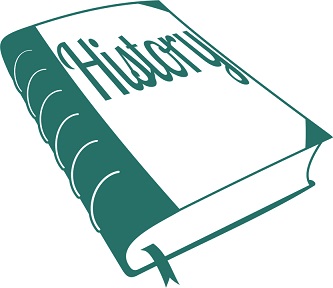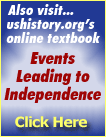
The Declaration of Independence
Lesson Plan
Preamble
- What are the five key ideas in the preamble and what are some of the sources for the ideas and language?
- Where does Jefferson believe that governments derive their power to govern?
- What does Jefferson indicate are the rights of the people when government becomes “destructive of the ends” for which it was created?

"We hold these truths to be self-evident, that all men are created equal, that they are endowed by their Creator with certain unalienable Rights, that among these are Life, Liberty and the pursuit of Happiness."

What is truly meant by truths that are self-evident? Who is the "we" that is written about?
The Preamble describes the new philosophy of government that Jefferson and the other Founders proposed. It also justifies the "necessity" of a revolution. In this section of the document, the ideas in John Locke's Second Treatise of Government are described in a short, simple statement.
The Preamble consists of five propositions. Each reflects a common belief that had become prominent among at this time:
- All men are created equal
- They are endowed by their creator with certain unalienable rights
- Among these are life, liberty, and the pursuit of happiness
- Governments are instituted among men to secure these rights
- Whenever any form of government becomes destructive of these ends, it is the right of the people to alter or to abolish it. But that long-established governments should not be changed "for light and transient causes"
Read the Preamble aloud to yourself. You might notice that it appears to have been written as a speech. This style is typical for 18th century speeches. Jefferson was skilled at writing in the rhythm, accent, and cadence of human speech. Historians teach us that this form of speech writing is typical is called Style Periodique.
The Preamble makes a monumental statement: "All men are created equal." Stop for a moment and think about how this idea would affect the role and purpose of government. We know historically that not all men and women were provided the same rights and protections by the government before or after the Declaration. But the idea that equal rights should be "self-evident" is central to the Declaration. This concept was what guided the Founders to develop a new form of government.
This phrase has continued to shape the way Americans think. Martin Luther King, Jr. quoted it in his "I Have a Dream" speech. The women's suffrage movement changed it to "All Men and Women are created equal" when they were fighting to get women the right to vote. Even the United Nations has used a version of this phrase in their Universal Declaration of Human Rights. Even when we don't accomplish this goal, the ideal of equality is still important for humanity today.
The Preamble boldly states the "self-evident" rights of every individual as "Life, Liberty and the pursuit of Happiness." This phrase is slightly different from John Locke's. He stated that these rights are "Life, Liberty and the pursuit of Property." Jefferson must have added happiness on purpose; otherwise, he would have just duplicated what Locke wrote. This change in language helped Jefferson argue that government should protect more than just wealth — it should also protect the well being of its citizens.

"— That to secure these rights, Governments are instituted among Men, deriving their just powers from the consent of the governed,"


"— That whenever any Form of Government becomes destructive of these ends, it is the Right of the People to alter or to abolish it, and to institute new Government, laying its foundation on such principles and organizing its powers in such form, as to them shall seem most likely to effect their Safety and Happiness."

Choose one or more of the webpages you've studied as part of this lesson that you think are relevant to the above section of the Declaration and explain why.
Start page | The Document | A Reading | Signers | Related Information | Jefferson's Account | Declaration House | Declaration Timeline | Rev. War Timeline | More Resources | Lesson Plan |




